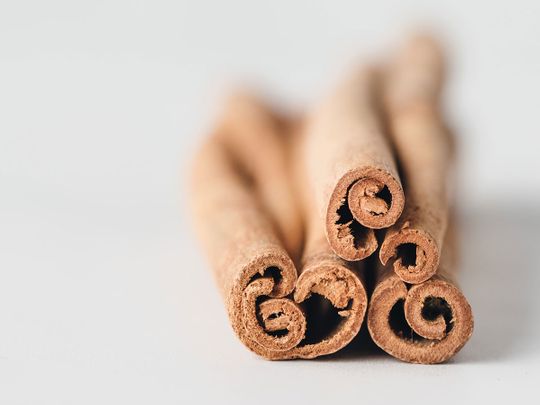
There was once a bird, the legend goes – the mighty cinnamologus – that jealously guarded its nest, which was delicately created from cinnamon sticks.
Click start to play today’s Crossword, where you can identify herbs and spices from all around the world. Find out what you can do with these ingredients in our Gulf News Food section, which is full of recipes, guides and information on food.
Arab traders came up with the story of the cinnamon bird nearly 2,500 years ago, according to a report in the UK-based news website BBC. They spread the tale that the only way to extract cinnamon from the bird’s nest was to bait the cinnamologus with massive chunks of meat. The bird would get a whiff, fly down, snag the meat and head back to its nest. When the cinnamologus would settle into its fragile nest with its meal, the precariously arranged sticks would shift, causing the entire structure to collapse. Then, traders would rush to gather up the fallen sticks and take them to the market.
The source of cinnamon was one of the best-kept secrets in the ancient world. In actuality, the fabled bird didn’t exist. But the story had the ancient Greeks and Romans fooled for several centuries, helping Arab traders ward off curious competitors trying to find out the source of the spice.
It wasn’t until the first century AD that things began to change. The infamous Roman emperor Nero burnt a whole year’s supply of cinnamon at the funeral of his second wife, in remorse over killing her. As the empire faced a shortage of the spice, Roman scholar Pliny the Elder began looking into the possible source of cinnamon. He finally made the connection between the fables and price inflation, and found that similar distracting stories were attached to other spices as well, including cardamom, black pepper and turmeric.
From that moment, the hunt for cinnamon became feverish, with Europeans often raiding Arab ships along the Indian coast, looking for the spice. In 1505, Portuguese sailors who were pursuing an Arab merchant ship found themselves lost in the rough seas of the Indian Ocean. They sought shelter at the first shore they came across, and found it was unfamiliar. They had unwittingly arrived in Sri Lanka, the very island that produced their precious cinnamon.
Once they realised this, the Portuguese got to work, intruding in the country’s internal affairs, exploiting rivalries, and slowly establishing their control over the cinnamon trade. They even stole what they thought was a sacred relic – the tooth of Gautama Buddha – from a Buddhist holy site in Kandy and burnt it to establish their dominance (the tooth turned out to be fake, with the real one safe in another part of the country).
The Portuguese eventually managed to create a monopoly in the cinnamon trade, and generated a tenfold profit. And so began the colonisation of the island nation. The Portuguese enslaved the Sinhalese people, sank Arab dhows and hung Europeans who tried to infiltrate the operation. The Dutch and then the British overtook the island and continued the practice.
Once consumer demand for other spices, like the cassia bark, began to increase, and preference for tea, coffee, chocolate and sugar outstripped the popularity of traditional spices, the violent era of cinnamon finally came to an end.
Try out recipes with this spice: Jewish orange, cinnamon and walnut babka or banana bread with jaggery and cinnamon.
Play today’s Crossword and tell us if you enjoyed it at games@gulfnews.com.



